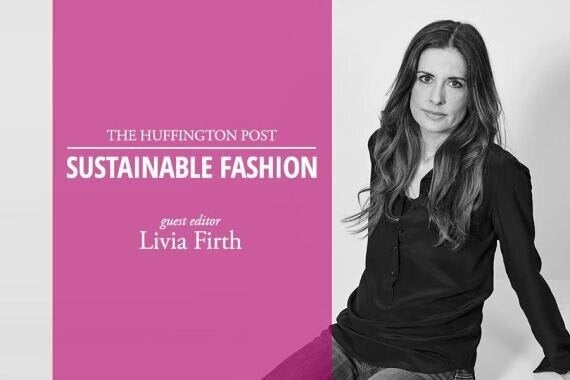This blog is part of a month-long focus around sustainable fashion across HuffPost UK Style and Lifestyle. Here we aim to champion some of the emerging names in fashion and shine a light on the truth about the impact our appetite for fast fashion has around the world.

How do you define sustainable fashion? The truth is, you can't. Or at least not in a few sentences. Words such as ethical, sustainable or ecological fashion have been so over used that they create more confusion than certainties.
The truth is we are in a situation today perfectly described by Carlo Petrini, founder of the Slow Food Movement when he asked a very simple question: "How did we end up in an era when we have to define and certify things that should be normal?"
To unpick that, we need to define unsustainable (and fast) fashion.
Fast fashion is a relatively new phenomenon. One that's caught us all, as consumers, in an absurd circle of micro trends. Think about it. Around two mini seasons a week in store. Disposable clothes that stay in a woman's closet for an average of just five weeks, before being thrown out - all in the name of the democratization of fashion.
In reality, this is exploiting not just us, the "consumers", but also the planet's resources and the people who produce them. The collapse of the Rana Plaza factory in Bangladesh in April 2013 showed the world the true human cost of production at these volumes and prices. And don't even mention the environmental impact. It's enough to say that between 11,000 and 20,000 litres of water are needed to produce just ONE pair of jeans.
Each year across the world, 1.5billion garments are sewn by an estimated 40million people, working in 250,000 factories. These are predominantly made in countries described by the UN as the world's least developed. All in all, the garment and textile industry is estimated to be worth some $3trillion. And the bulk of that goes into the pockets of the owners of those fast fashion brands. Two of them are at the top of Forbes rich list.
Fast fashion corporations have outsourced production to poor countries. In the process, they enslave them by addicting them to the idea of enrichment and start driving production costs down with volumes.
Like any good pusher, they offer their potential clients a great deal, only to get them addicted. Once they've succeeded, they're in the driving seat. In the case of poor economies, they addict them to the idea of lifting their people out of poverty. In fact, they're like the big bad wolf, lying in wait for the dependency to start.
At the same time, they operate as distributors and addict us, "consumers", to the idea of always faster, ever cheaper fashion, despite the human and environmental cost. It's the old problem. Out of sight, out of mind. It happens far away and so we don't see it. I think the whole system has been beautifully described by Andrew Morgan in his stunning documentary The True Cost, which I urge everyone to watch if they haven't already.
Benjamin Harrison, 23rd President of the US (1889-1893) once beautifully said "I pity the man who wants a coat so cheap that the man or woman producing it starves in the process". More than a century later, this happens to a scale which is completely out of proportion.
So the problem is much more complicated than simply finding a definition for sustainable fashion. Once you understand the mess we're in, the solution is very simple. Buy less and get more 'fashion mileage' out of each piece. Buy heritage pieces that will last. Become an active citizen through your wardrobe.
This is why I love fashion. It truly empowers you. But only when it allows you to carry beautiful stories woven into stunning clothes.
There is no legal or agreed definition of sustainable style or ethical fashion and there needn't be. Instead we need to buy pieces that are made with design ingenuity and innovation that prioritize social and environmental justice, along with the aesthetic - all three on an equal footing.
There are plenty of fashion brands today which are doing this and addressing complicated issues in their supply chain - but fast fashion will never be able to truly solve anything until it accepts to change its core business model - eg until it decides to produce less.We have a huge power as consumers - not only as we vote every time we buy something - but also because the change can and must start from us - from starting to buy clothes that we love.
Clothes that will sustain our wardrobe for years to come.
HuffPost UK Lifestyle is running a special series around Sustainable Fashion for the month of September. Livia Firth is creative director of Eco-Age and founder of The Green Carpet Challenge, and will be guest editing on 18 September. If you'd like to blog or get involved, please email us.